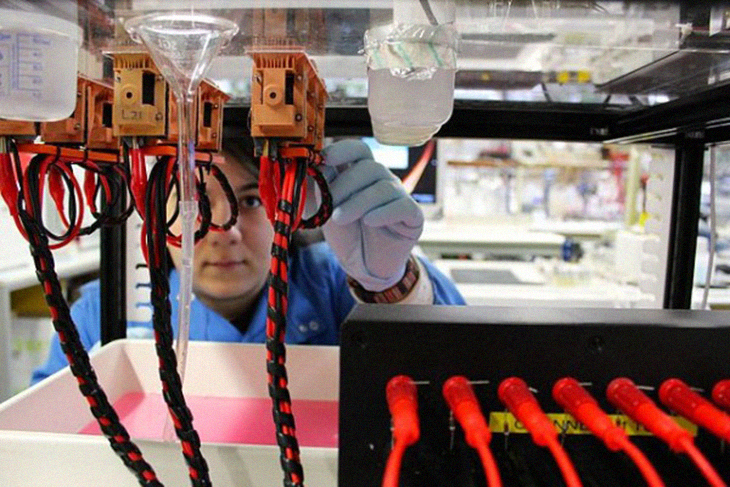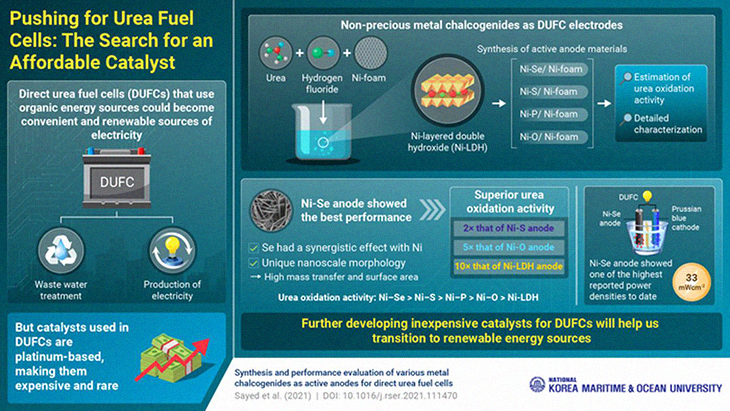When it comes to renewable energy, we have a lot of sources to turn to – wind, water, heat, and the list goes on. But what about renewable energy from human urine? This may sound too far-fetched, but a group of scientists have found a way to make this possible. After all, isn’t recycling the best way to go about preservation nowadays?
Dirty water is oftentimes deemed useless. These are directed to seas and rivers, and the amount has become problematic. A big portion of the earth’s waters have been contaminated. This type of waste management is no longer sustainable. Something needs to be done. Thankfully, there have been those who have worked nonstop to find the perfect solution.

A group of South Korean scientists have become leaders of the latest revolution in pee-powered fuel cells. These cells have the ability to generate “clean” energy and purify wastewater.
Scientists have managed to succeed in building a state-of-the-art performance machine that makes use of urea fuel cells, which is a common organic molecule found in fertilizer. This is also a principle component of human urine. The machine they achieved was made with inexpensive electrodes and without the use of precious metals, which makes it more practical for the whole world to use.
Direct urea fuel cells (DUFC) have the ability to turn any wastewater treatment plant into a renewable power station. Credit can be given to the experts of the Korea Maritime and Ocean University who have developed this newest form of technology.
These energy generators are also quite flexible when it comes to usage. They provide new and unique ways to equip a house, a town, or a parish with a form of renewable electricity while slashing their footprint and upkeep of the other types of infrastructures.
The pee-powered machine makes use of a nickel and selenium anode and nickel microfoam. Professor Kyu-Jung Chae discovered these inexpensive metal components that act as the catalyst in the DUFC as it facilitates vital chemical reactions that enable the whole thing to work. Before, this required the use of money. It was only now that they were able to scrap off precious metals such as platinum when they built it.
They tested the machine out using several nickel-based catalysts. During the process, they also discovered that selenium had a synergistic effect. Moreover, when they paired these together with a cathode made from Prussian Blue, the combination managed to outperform precious metals. In fact, these were able to generate the highest power densities ever found in a DUFC with nickel.

Fact is, urea fuel cells generate electricity. At the same time, this also helps in the treatment of urea-ridden wastewater by providing clean water at the same time. The method is a flexible option in remote places, especially those that don’t have access to a stable power grid. Rural areas, ships, or spacecraft aboard can very much benefit from this new method.
In other parts of the world, a Japanese university is also choosing to try and turn “number 2” into the number 1 power source for its edifices and buildings. Hence, this explains the invention of a toilet that composts human waste and converts this into methane biogas. This was made for a school’s energy system. The method has the students in the school learning how to reevaluate waste like no one has. GNN reported on this and has said that the amount of waste they contribute to the electric bills is given. This comes back in the form of a digital currency.
On average, a human’s daily waste has the ability to generate an estimated 0.5 kilowatt hours of electricity per day. Bacteria is able to break down the excrement of student and faculty alike, and biomethane that is the byproduct is siphoned into a solid-oxide fuel cell which powers several building functions, an example of which is the hot water heater.
The Power of the Pee
According to a review made at IamRenew , urine and wastewater can be utilized as energy. Why? Because these contain organic carbon content. This is what the bacteria in the microbial fuel cells efficiently use for their survival as sustenance.
In the breakdown process, a microbial fuel cell is formed in a pair of half-cells. These each come with an electrode inside. Live microbes collected from the natural environment are injected in just one of them. The microbes grow and retain themselves on the electrode. An anaerobic respirator is used for this. According to Professor Ioannis Ieropoulos, just like the other forms respiration used by many species, the microbial fuel cells take in carbon energy and other compounds. Then, they give out and expel metabolites.
In that half-cell used, this will be pointed out as the anode of a microbial fuel cell and the electrode becomes the receiver of those electroactive metabolites. The bacteria directly excretes and respires onto the surface of the electrode.
And that is how urine is used as power.
What are your thoughts? Please comment below and share this news!
True Activist / Report a typo


